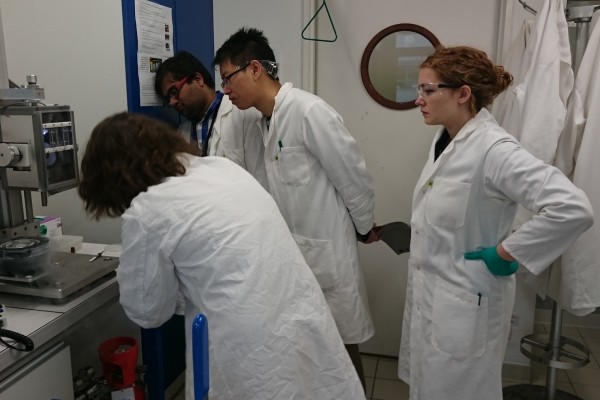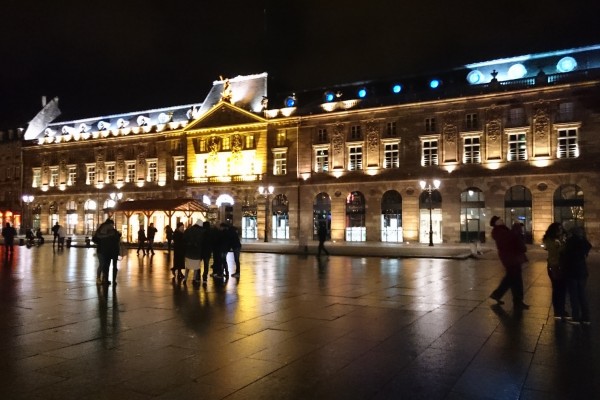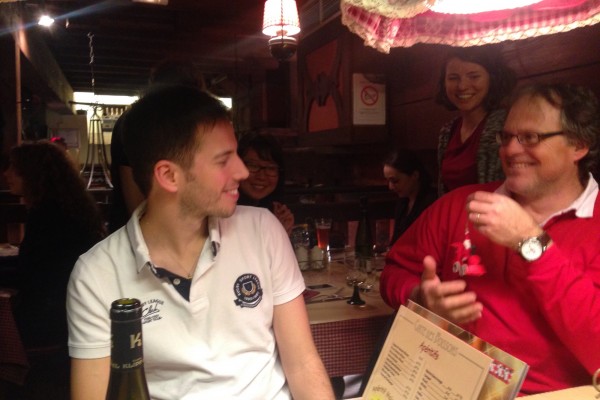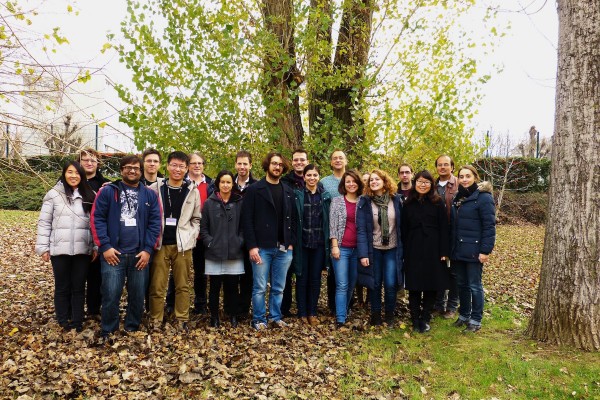As the year 2015 was coming to its end, SNAL ESRs gathered again in Strasbourg to get their last dose of new and contemporary ideas in the field of Lipid Membrane Research. The aim of this training course was to expose ESRs working from the different aspects of same research field, namely synthesis, theory and analysis and in vitro applications to the Imaging techniques of the membrane from the experts of the MCube team (ICS). We would like to thank the organizers Dr. Carlos Marques, Dr. Fabrice Thalmann, Dr. Marc Schmutz and the PhD students from Strasbourg partners mentioned below, who put an enormous effort and meticulously designed the training event, making it highly interactive and fruitful for the visitors.
Each training day started with the practical sessions organized by Monika Kluzek, Mattia Morandi (ESRs) and Vivien Walter (PhD student at MCube). It was an opportunity for the visitors to learn the techniques that their fellow ESRs at ICS use to pursue their research and understand the problems that they face in their day to day research life. Moreover, for the researchers from a different field who have no experience in lab practice, it was an unique occasion to get in the lab coats and safety googles, see the things from a better practical perspective and feel the pleasures of the “lab world”. Each of the Group Leaders of the practical sessions, explained step by step the experimental procedure they obtained with the start of their PhDs. Mattia explained the techniques of pulling and aspirating of pipette and using these pipettes to study the mechanical properties of the lipid vesicle membranes using a confocal microscope. Similarly, Monika presented the process of making Large Unilamellar Vesicles (LUV) and Small Unilamellar Vesicles (SUV) from powder form of lipids and then visualizing and characterizing them under Transmission Electron Microscopy (TEM) and Vivien introduced to attendees the techniques of Gel Assisted and Electroformation Method of Giant Unilamellar Vesicles (GUV) formation from similar powder forms of lipids. Moreover, we would like to thank Meriem Er-Rafik and Pierre Muller for their help and explanations during the practical sessions. These ones were extremely useful for the attendees as they were allowed to perform the experiments, of course, under the group leader´s guidance, and see and feel the outcomes themselves. This hands on experience helped the proteges to realize the type of problems that are faced while doing this kind of research and appreciate the expertise acquired by the group leaders. Apart from the technical information, the detailed discussions between the group leaders and proteges helped in deep understanding of theoretical aspects of the described experimental techniques.
After the practical sessions, it was time to get a more general view of the field from lectures given by the Experienced Researchers. The first day lecture session started with the talk of Jerome Mutterer, who explained the last stage of image analysis and processing, the principles involved in removing the noise, 3 dimensional visualization and other techniques to improve the informational efficiency of the images obtained from the experiments. It was followed by the talk by Alain Brisson who gave a perfect introduction to optical and electron microscopy, starting with rudimentary principles of ray and geometric optics to present day applications and complexities faced by experimenters using such microscopes. The talk also included the brief history of evolution in resolution of microscopes in starting from basic optical microscope to Scanning Electron Microscope (SEM) and TEM. Olivier Haeberie shone some more light on the principles of microscopy in his talk while Patrick Schultz shared his experience with TEM, which he acquired during his experience by using TEM to determine structure and classification of Biomolecules. Yves Mély, the last speaker on the 2nd of December, gave a delightful talk, explaining the basics of fluorescence microscopy, its advantages and limitations, and research he has conducted using the microscopes and shared the lessons he learnt from his long research life.
It is important to notice that all the lecture sessions were followed by engaging discussions among peers and experts which lead to further development of insights to concepts taught in the talks. Even if, one may argue that these lectures may not have direct impact on the researchers work, but in the long term, these exchanges of ideas between peers help them reaching higher stages of the research maturity.
Authors
- Bridging molecular simulation models and elastic theories for amphiphilic membranes - 03/07/2018
- Training in Dresden - 28/12/2016
- Training in Frankfurt - 24/02/2016










